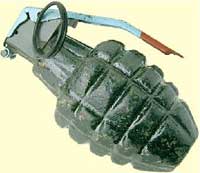Researchers at Birmingham University and Thales hope to develop portable sensors to detect hidden weapons and explosives in an open area without having to channel people though security gates.

The system uses radio pulses from a UWB sensor and a principle of physics known as Late-time Response to analyse the signals. A UWB radar signal is so short that each part of the target acts as a separate point, each reflecting a pulse back at a different time.
The team use processing software to identify the signals and check them against a database of known suspicious signatures. “It is similar to the way a dog picks up a scent. Because it knows the characteristics of the scent it is looking for it can disregard the millions of other signals it is receiving,” explains Mikhail Cherniakov.
Used with imaging techniques, the sensor could identify a suspect and then target them for more detailed scanning.
The UWB sensor should be able to pick up the signal of a concealed weapon in a crowd from up to 30m away. The sensors have already performed well in tests, by successfully detecting a grenade-like object.
“In time we might even be able to determine if the weapon is a shotgun or kalashnikov, and know exactly how many metres from the sensor the suspect is,” Cherniakov said.
Via The Engineer Online.
